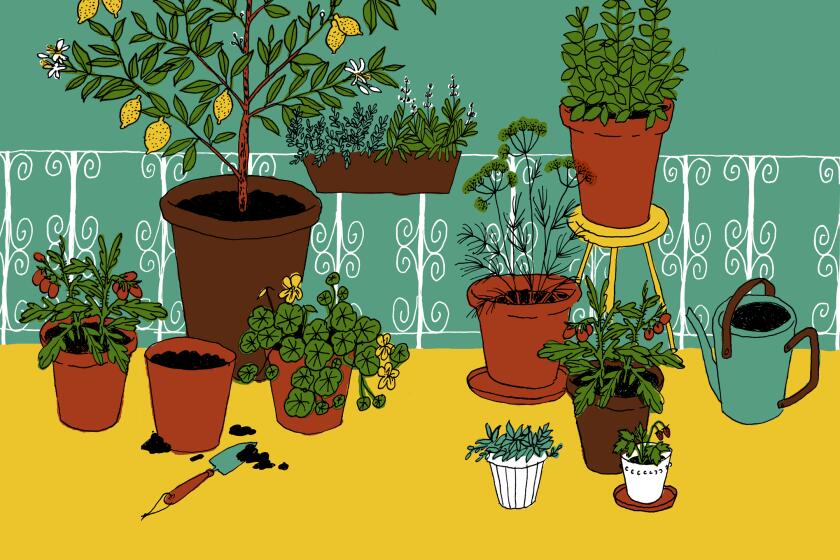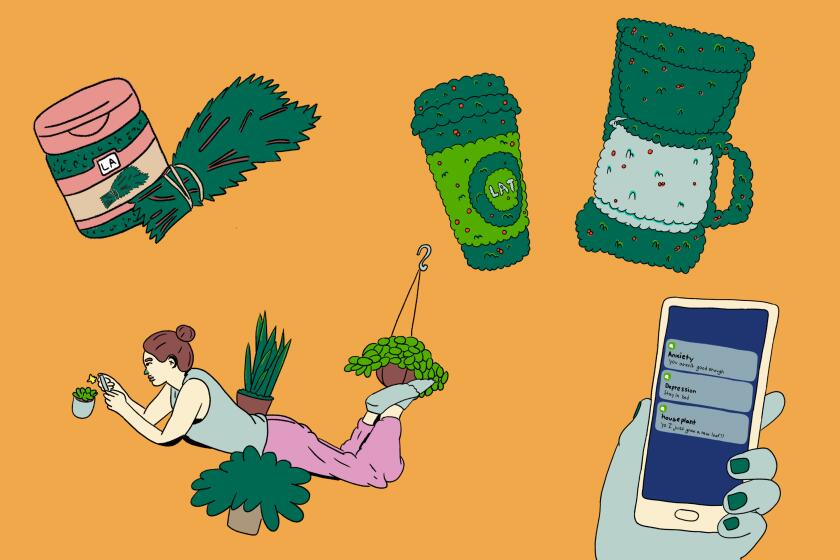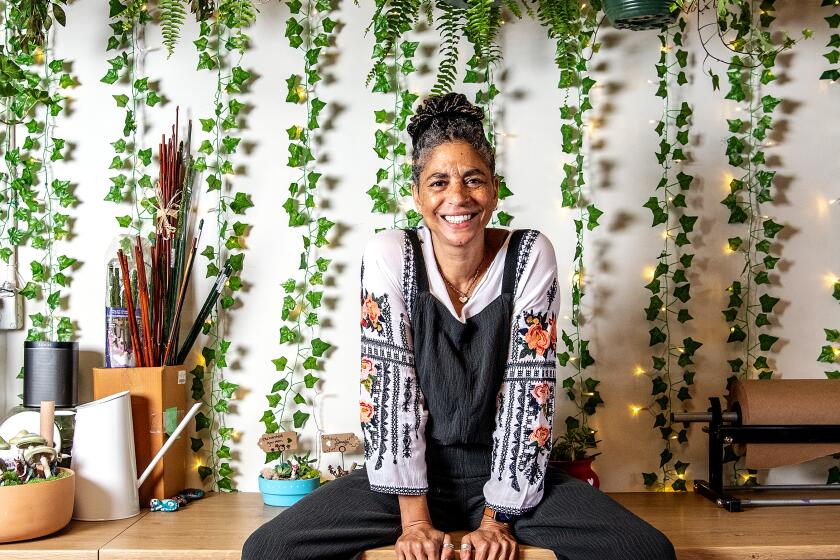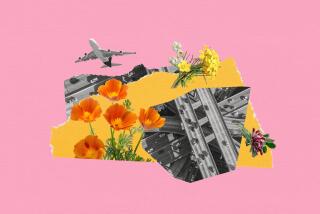They turn dirty old basketballs into the dopest planters. One even honors Kobe
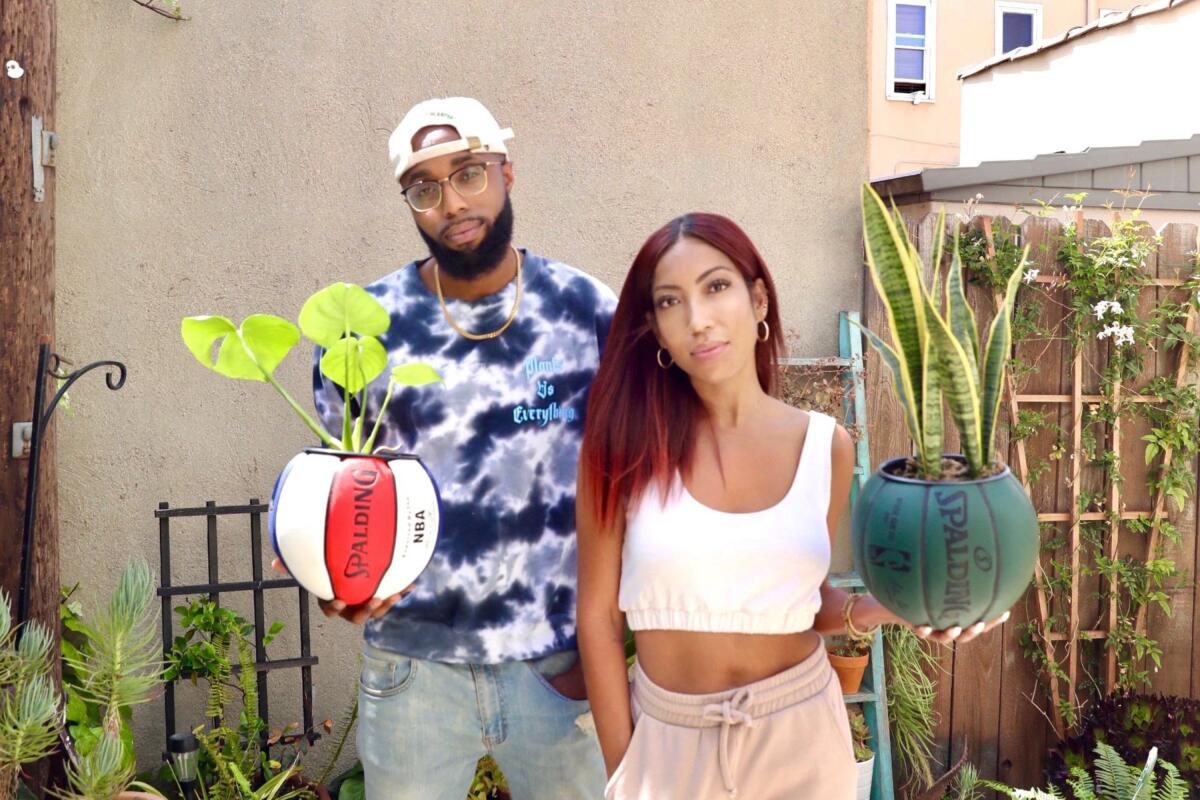
- Share via
This is the latest in a series we call Plant PPL, where we interview people of color in the plant world. If you have any suggestions for PPL to include in our series, tag us on Instagram @latimesplants.
While covering “plant culture” full-time I’ve had the opportunity to witness more than my fair share of takes on plants sourced from the mouths of any- and everyone I like to call “the grapevine”: I’ve seen everything from traditional weekend warrior-gardening enthusiasts, with those cute straw hats — you know the ones — to grassroots vegetation statement-piece takeovers orchestrated by debonair social activists.
Every so often, I come across a plant interpretation or “plants-pretation” (still working on coining that phrase) that blooms above the rest. Ol’ Dirty Planters (which gets its name from late Wu-Tang Clan rap group frontman Ol’ Dirty Bastard’), whose founders use secondhand basketballs as sports planters, is currently the object of my attention. When I stumbled across this unique spin on planters, it shattered my “I’ve seen it all” attitude.
In our Plant PPL series, we interview people of color in the plant world, including plantfluencers, plant stylists, floral artists, enthusiasts, experts and garden store owners.
A few years ago Karissa Allen and Justin Cox met at a privately owned industrial-supply distributor both worked for; they became fast friends and soon after co-founded Ol’ Dirty Planters. Art has influenced most of Allen’s life since the San Bernardino native moved to Los Angeles in 2004 as a USC student, dancer and USC Trojan marching band member. Allen worked in the social media world for a few years, which gave her opportunities to work with brands and flex her creative muscle before Ol’ Dirty Planters allowed her to take it to another level.
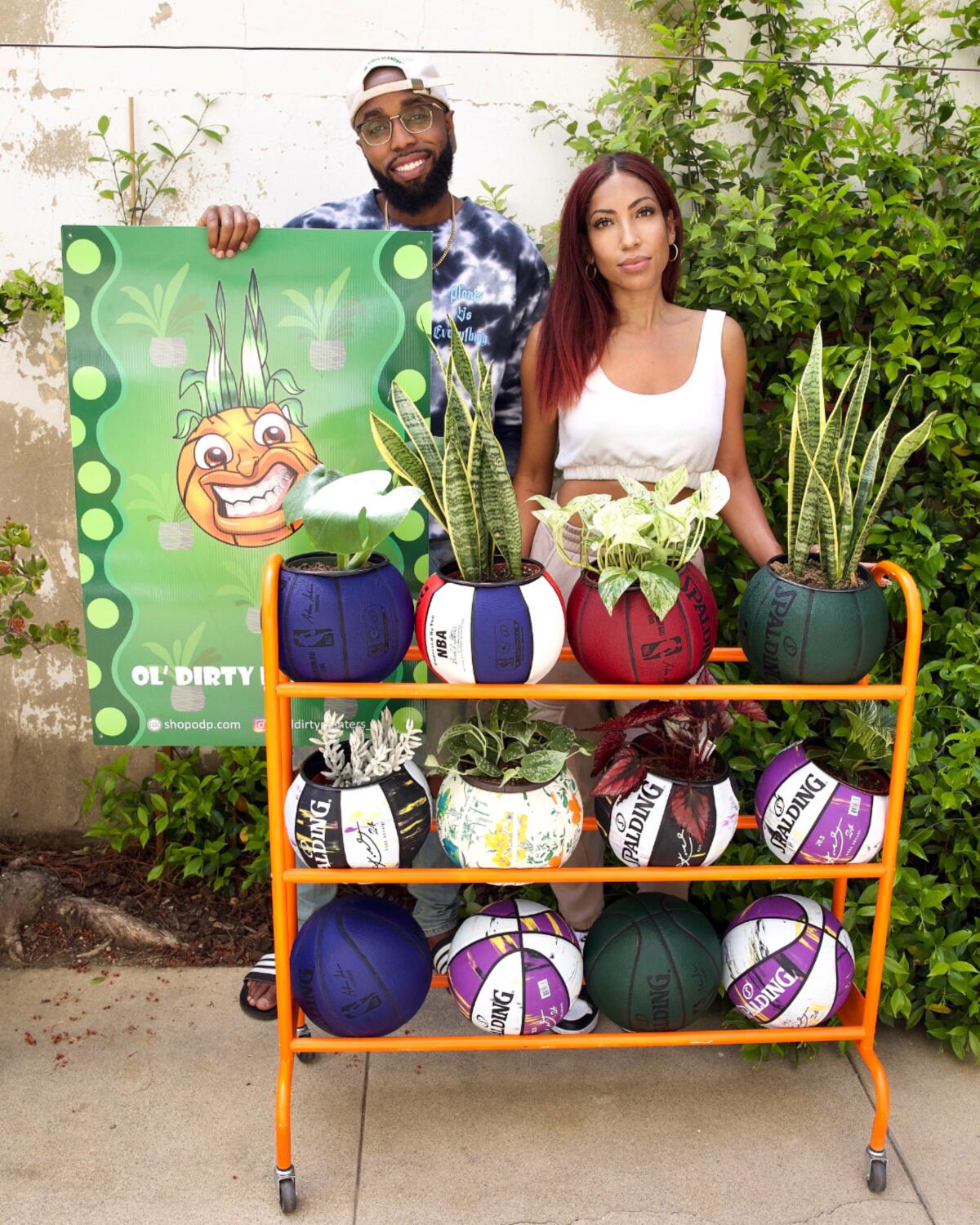
San Diego native Cox, the other half of Ol’ Dirty Planters, grew up around animals. He had a horse, a pig and a sheepdog while growing up. Cox ended up being a top Division 1 athlete on the track team at USC. After college, he started a marketing agency and his photographs have been published in numerous fashion magazines.
Ol’ Dirty Planters has been a passion project for Cox. “It’s been cool to put my creative skills and business experience into something that is community-oriented, gives back and supports Wu-Tang Clan culture!” he says.
The following interview was conducted over email with Ol’ Dirty Planters co-founders Karissa Allen and Justin Cox.
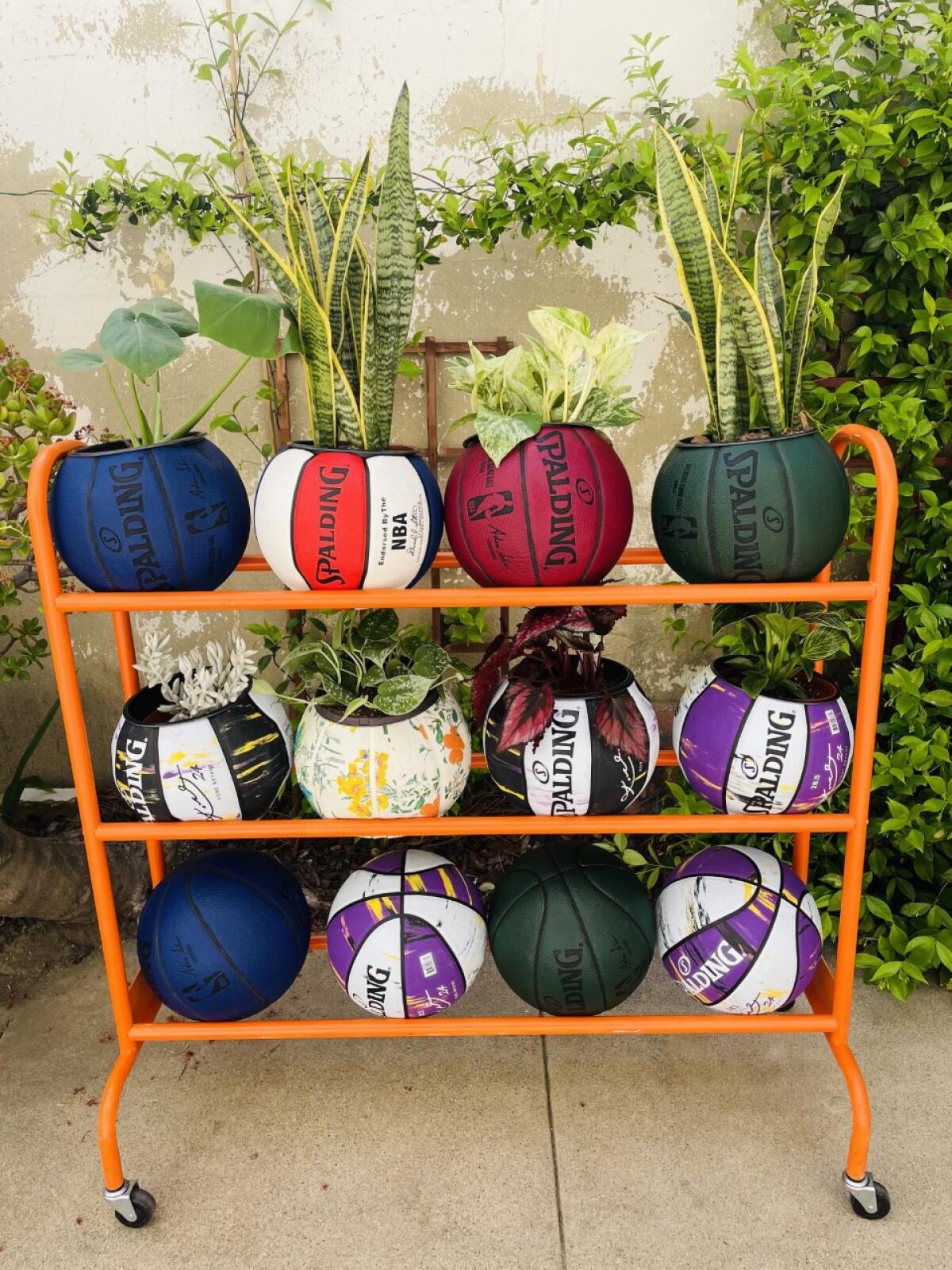
How did you guys start Ol’ Dirty Planters?
Last year, Justin and I both lost our jobs due to COVID. While figuring out what to do next, we started collecting plants in our homes and found comfort in the stress relief, purified air and vitality plants bring. We started to brainstorm ways we could create a business around plants that would be fun, creative and sustainable, and we settled on basketball planters. Most basketballs are made from synthetic rubber, which is difficult to decompose, and basketballs also have a relatively short life on the court. Our planters give balls life after basketball. We’re also really interested in the intersection of basketball culture and horticulture (sporticulture, if you will), and love that our planters are bringing more and more plants to Black and Brown communities.
You don’t need land to grow food. We talked to six L.A.-based experts who explain how you can easily grow veggies, fruits and herbs in pots on your balcony or any other small space.
What’s the process in making a basketball planter? Where do you get the balls from?
We have relationships with some of the top sporting goods companies in the industry, which is where we get new balls — we provide a sustainable outlet for these companies to donate their excess stock/discontinued balls. We also have a program called “Life After Basketball” where people send us balls (both new and used) and we convert them into planters.
We have a very intricate process to make sure the material of the basketball is conducive to being customized, and that the finished product is as sleek and polished as possible. It took us a lot of time to perfect and we’re really proud of the result. Any pattern or color you see on our planters is how the basketball was originally made, but we are in the process of designing our own basketballs, which will provide more stylized options for people to choose from.
Are there holes in the bottom for watering/draining? Or is it just a cover, and you plop your plant in there?
Yes, each of our basketball planters comes with a removable plastic planter so that you can water your plant, properly drain the water, and put it back in the basketball. Our planters can stand on their own but we also sell acrylic stands as well as various straps and chains for hanging options.
When did you start your Instagram account?
In December of 2020. We’ve grown 6K+ followers over four months and are so grateful and amazed by the love we’ve received.
Here’s a look back at our funniest plant memes of 2020
Why did you decide to start using Spalding as planters?
Spalding is an iconic brand. When you think basketball you think Spalding. There’s also so much range in their balls. They have more traditional basketballs and they also do really fun collaborations with brands like Supreme and Urban Outfitters. One of our favorite of their balls that does really well for us is the Kobe Marbled basketball. Living in L.A., Kobe is one of our heroes and it’s cool to be able to honor him in that way.
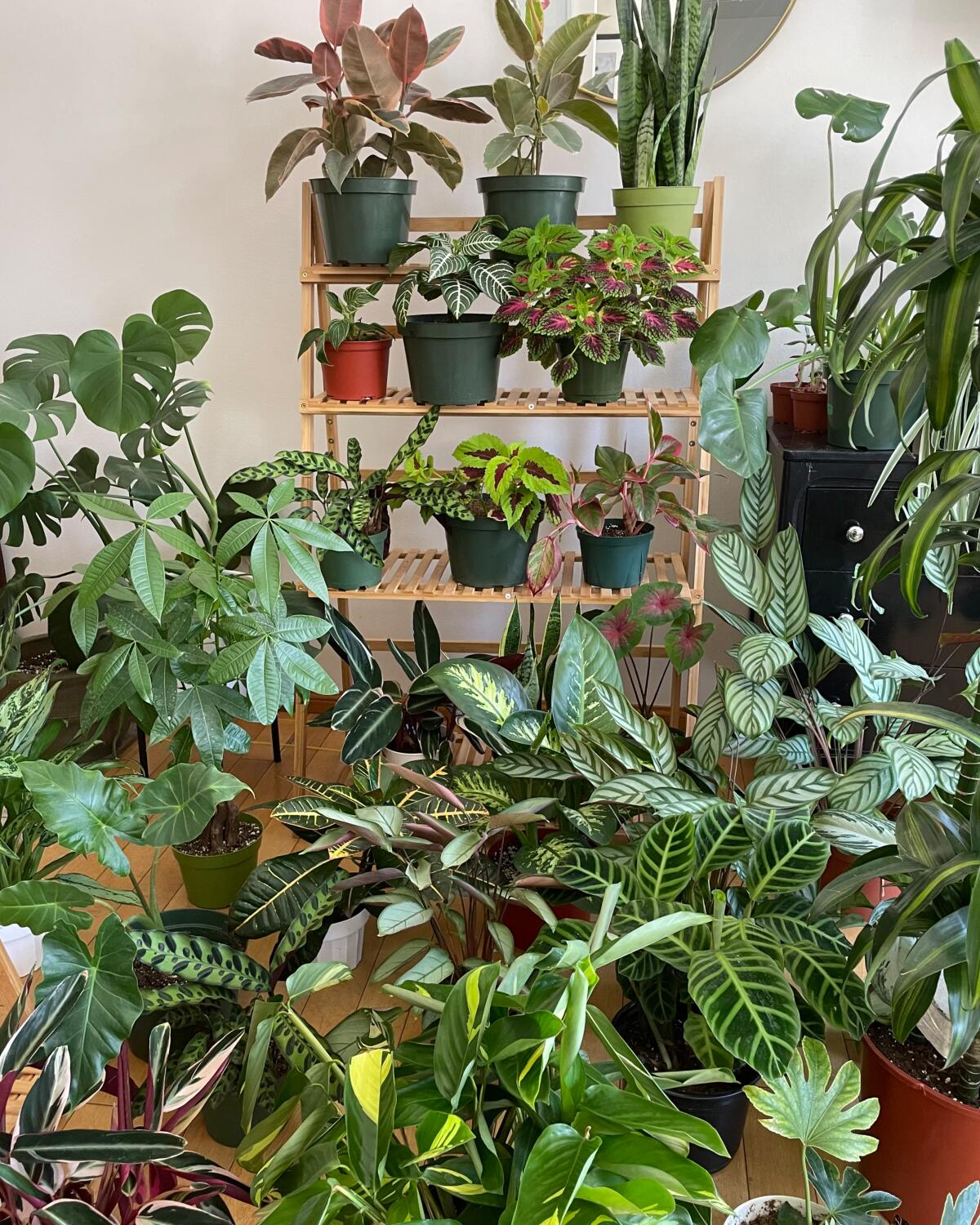
How did you begin your journey into plant parenthood?
It really started during COVID. We’ve both always had a couple of plants in our homes, but we didn’t really start collecting them until COVID. We both live in the city and don’t have much outside space, so having limited access to nature during the shutdown was tough for us. We started buying plants as a way to feel connected to life and nature and the Earth and it was extremely therapeutic. The next thing we knew, we were living in full-on jungles!
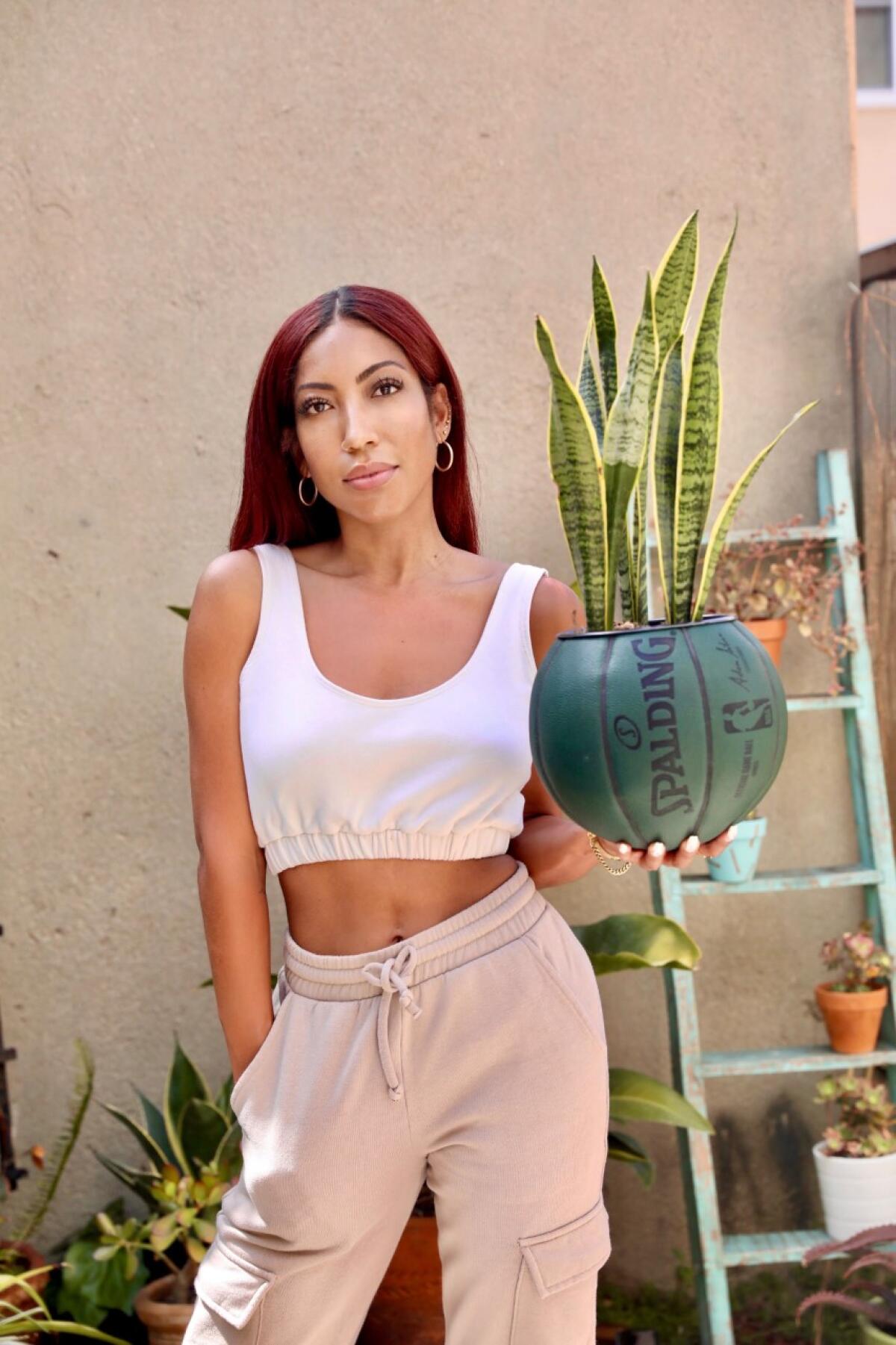
What kind of responses have you received from the plant community?
We’ve received so much love from the plant community, and it’s been even more so since we’ve launched our new plant business, @plantsvseverything, where we strictly sell plants, versus Ol’ Dirty Planters, where we sell our upcycled planters as well as plants. Jumping even further into the plant world with @plantsvseverything has been really exciting and we’ve been able to develop some great relationships with local nurseries, which allows us to be very competitive with pricing. We offer a “Shop With Me” program as part of @plantsvseverything where we take plant requests from our customers through our Instagram and personally shop for them. Our customers can book virtual meetings with us allowing them to see the selections at our nurseries, which makes them feel like they’re right there with us. It’s been a really successful program for us, and our customers seem to really enjoy the process.
We also love the variety of customers we have. We have customers who own a million plants and are now really excited to add one of our planters to their collection, but we also have customers who’ve never even thought to buy a plant but now they’re getting into plant parenthood because they like our planters. Our goal is to get more plants in the hands of more people, so it means so much to us when people trust us with their first plant purchase.
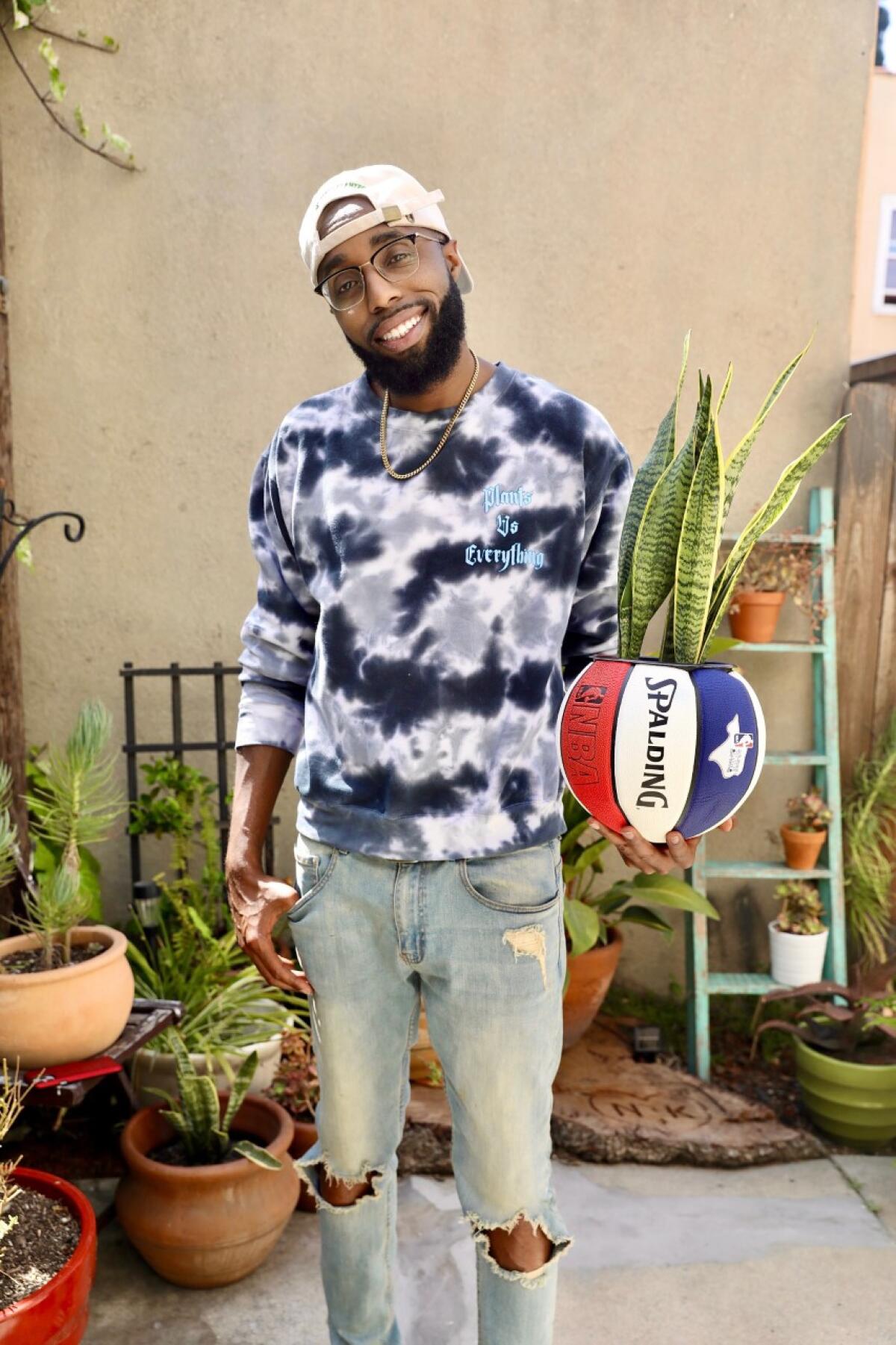
What’s your favorite plant?
Cox: We both love monstera deliciosas. We just love their split leaves and their tropical look. We also love that they look exotic but are relatively easy to care for.
Allen: A monstera was actually the first plant I bought last year during quarantine and I can’t believe how much it’s grown. It makes me a proud plant parent.
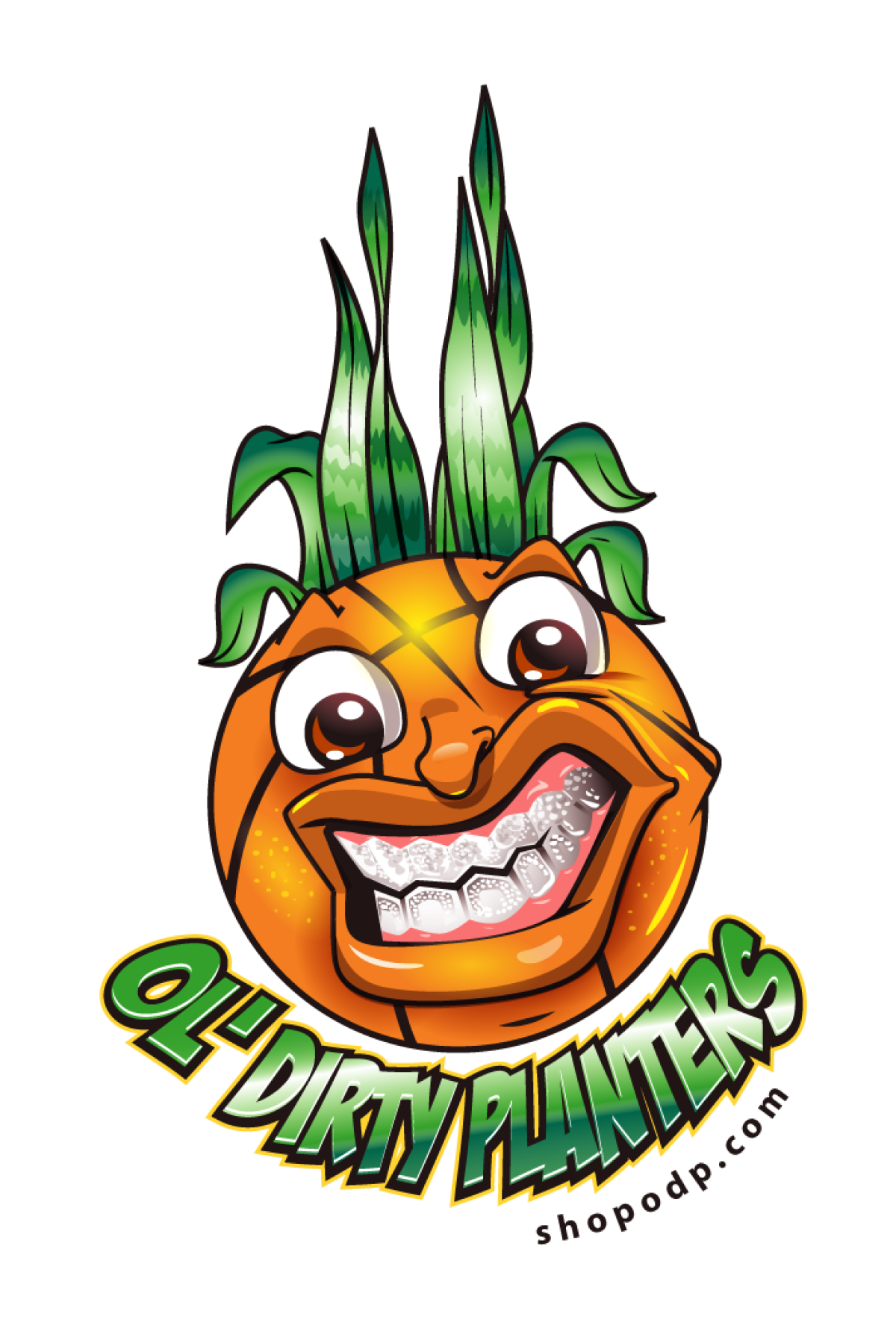
What does your slogan “Stay in the dirt” mean?
It has a couple of meanings. Besides the play on words with our company name, it’s also our way of encouraging people to keep planting things, whether it be actual plants or the seeds for an amazing idea/business, etc. Stay in the dirt, keep grinding, and your hard work will grow into something beautiful.
When Shawna Christian turned 50, she left her IT job and invested all her money in Tansy, a Burbank plant store. Then the pandemic hit.
Tell us about some of your creative inspirations behind Ol’ Dirty Planters.
As far as our social media goes, we say that our aesthetic is a mix of Beyoncé and Ol’ Dirty Bastard. We post photos that are beautiful and sexy but still have a little bit of that ODB grime. For our planters, we try to use balls that will appeal to a variety of people. If you are a Lakers fanatic, we have something for you. If you want an attention-grabbing ball with bright colors and designs, we have something for you. If you want something more understated for a home decor piece, we have something for you too.
Any advice for beginner plant parents?
1. Start with a plant that is easy to care for and work your way up!
2. Make sure to choose a plant that is ideal for your environment. For example, a plant that requires lots of bright light won’t thrive in a low-lit room no matter how much attention you give it.
3. Be patient and listen to your plants. They will tell you what they need. For example, we’ve found that using our plants’ soil as a guide for watering works out much better than when we stick to a specific watering schedule.
4. Don’t get discouraged if your plants get fungus gnats; they are extremely common and happen to the best of us. Water your plant with one part water (filtered water is always best) and two parts hydrogen peroxide and it will knock them right out.
More to Read
Sign up for The Wild
We’ll help you find the best places to hike, bike and run, as well as the perfect silent spots for meditation and yoga.
You may occasionally receive promotional content from the Los Angeles Times.

